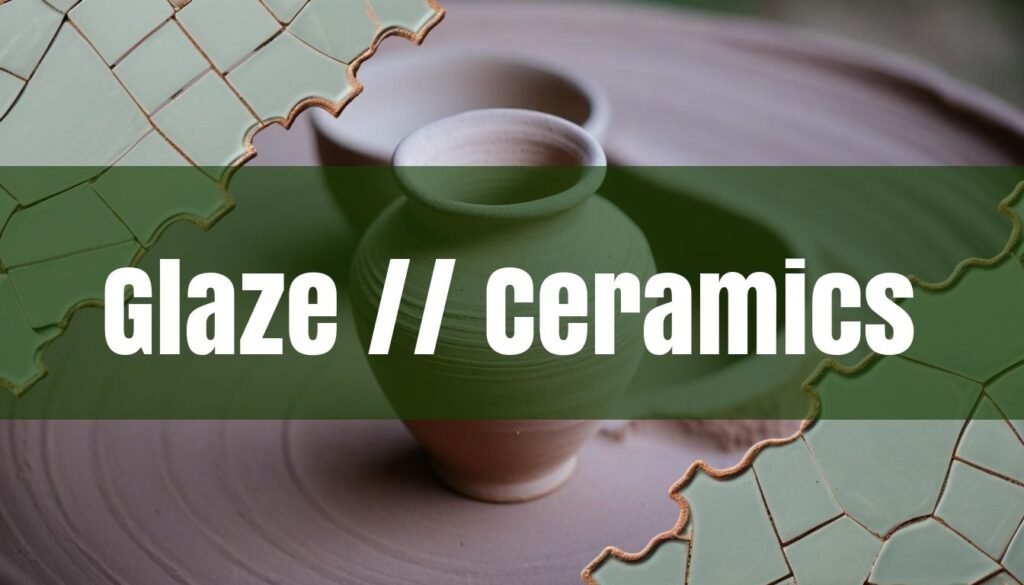Glazing ceramics at home is an exciting endeavor that allows you to bring your artistic vision to life, imbuing your creations with unique colors and textures. It’s a journey filled with experimentation and learning, where each piece tells a story of your evolving skills and aesthetic. This guide will walk you through the essential steps and considerations for successfully glazing ceramics in the comfort of your own home, focusing on techniques accessible to hobbyists and small-scale ceramic artists.
Choosing the Right Clay and Glaze Combinations
The foundation of successful glazing lies in selecting the right type of clay body that harmonizes with your chosen glazes and firing temperatures. Different clays have different properties, including their ideal firing range, which is measured using “cones.” The cone size indicates the temperature at which the clay matures, becoming vitrified – a hardened, non-porous state. Using the wrong cone can lead to melting, or under-vitrification, making the piece unsuitable for functional use.
For home glazing, electric kilns are typically favored due to their ease of use and safety features. This often leads hobbyists to select clays designed for low to mid-range firing temperatures. Low fire clays, ideal for cone 06 to 04, often exhibit reddish or white hues. Amaco 25 White Art Clay is one such example, firing beautifully within this range. Mid-fire clays, maturing at cone 5 to 6, offer a balance of durability and vibrant color response with glazes. Laguna B-mix and Speckled Buff are popular choices in studio settings, while Amaco 11 A-Mix and #38 Stoneware are also excellent options, capable of achieving stunning results at both cone 5 and cone 10.
High fire stoneware clays, designed for cone 10, produce very durable ware. When selecting your clay, consider the type of projects you wish to create. For example, specific clay bodies are recommended for floor and outdoor tiles, each with varying cone recommendations. Also consider paper clay, a mix of clay and paper pulp, which is good for transporting work. For more information, see this article on clay types.
Glaze Application Techniques and Considerations
Once you’ve bisqued your ceramic piece, the next step is applying the glaze. Mastering glaze application is key to achieving the desired aesthetic and functional properties in your finished work. There are several methods commonly used in home studios, each offering unique advantages and requiring specific techniques.
Brushing is a versatile method, ideal for intricate designs and controlled application. It allows for layering and creating depth, but it’s important to apply multiple thin coats to avoid brushstrokes and ensure even coverage. Dipping involves submerging the entire piece or sections of it into the glaze. This method is quick and efficient for uniform coverage, especially on simpler forms. Ensure the glaze is properly mixed and free of clumps, and control the dipping time to achieve the desired thickness. Pouring is another effective technique for covering larger surfaces or creating interesting glaze effects. By carefully pouring the glaze over the piece, you can achieve unique patterns and variations in color and texture.
Regardless of the application method, surface preparation is crucial. Make sure the bisqued piece is clean and free of dust or oils, as these can interfere with glaze adhesion, leading to crawling or other defects. Also, mixing your glaze is vital to ensure it can be used properly. If you buy glazes in powder form, you add water to it to make it usable. It is important that you sieve the glaze to ensure there are no clumps, and that you mix the glaze regularly during use to maintain consistency. More information on this can be found in this article.
Safety First: Protecting Yourself and Your Environment
Working with ceramic glazes and kilns requires a strong commitment to safety. Many glaze materials contain hazardous substances that can pose risks through inhalation, ingestion, or skin contact. Therefore, it’s essential to take appropriate precautions to protect yourself and your environment.
Ventilation is paramount, especially when mixing dry glaze materials or firing kilns. Inhaling silica, present in most clays and glazes, can cause serious lung damage. When mixing glazes, always wear a properly fitted respirator with a P100 or higher-rated filter to prevent inhalation of fine particles. A basic paper mask is not sufficient. If possible, mix glazes in a spray booth or under local exhaust ventilation.
Personal protective equipment (PPE) is also essential. Wear nitrile or latex gloves to protect your skin from irritating or toxic materials, and safety glasses to prevent splashes or powder from entering your eyes. Designate specific clothing for studio work and launder it separately to avoid spreading dust.
Kiln safety is another critical aspect of home glazing. Ensure your kiln is installed according to fire codes, and all electrical and gas hookups are done by professionals. Touching an element in an electric kiln can be fatal. When looking into the kiln, always wear welder’s goggles to protect your eyes from intense heat and infrared radiation. If you fire indoors, a kiln ventilation system is recommended to remove potentially hazardous vapors. Furthermore, never dry sweep your studio, and instead clean with a wet mop.
Troubleshooting Common Glazing Problems
Even with careful preparation and application, glazing can sometimes present challenges. Understanding common problems and their solutions can help you achieve consistent and professional-looking results.
Crazing, characterized by a network of fine cracks in the glaze surface, usually happens after the piece has cooled from the kiln, and is often caused by the glaze shrinking more than the clay body during cooling. To correct crazing, you can increase the silica content in either the clay or glaze, or decrease the feldspar content. Shivering, the opposite of crazing, occurs when the glaze expands more than the clay body, causing slivers of glaze to chip off the edges. The remedies are the opposite of those for crazing: decrease the silica and increase the feldspar.
Pinholing, characterized by small holes in the glaze surface, can be caused by a number of factors, including underfiring, thick glaze application, or the presence of certain materials like zinc or rutile. To remedy pinholing, try lengthening the firing cycle, applying the glaze less thickly, or adjusting the glaze composition. Crawling, where the glaze recedes during firing, leaving bare patches on the ceramic surface, often results from a high surface tension in the melting glaze or poor adhesion. To correct crawling, ensure the bisque ware is clean, thin the glaze, or calcine materials with high drying shrinkage. Blisters, bubbles on the surface, can be caused by overfiring or soluble fluxes in the glazes.
Firing Your Glazed Pieces at Home
The final step in the glazing process is firing your pieces in a kiln. If you’re new to pottery, starting with a small electric kiln or a home kiln is a good option. For most home potters, a medium-sized kiln like an 18” top loading electric pottery kiln is often the right size. Electric kilns are generally easier to use and install than gas kilns. A digital controller will help ensure consistent results.
Before firing, make sure your pieces are completely dry to prevent explosions. Load the kiln carefully, ensuring that pieces don’t touch each other or the kiln walls. Follow a proper firing schedule, gradually increasing the temperature to the glaze’s maturing point and maintaining that temperature for a soak, if necessary. Always monitor the firing process and be prepared to make adjustments as needed. Once the firing is complete, allow the kiln to cool completely before opening it. This prevents thermal shock, which can cause your pieces to crack.
Glazing ceramics at home is a rewarding journey that combines technical skill with artistic expression. By understanding the fundamentals of clay and glaze selection, mastering application techniques, prioritizing safety, and learning to troubleshoot common problems, you can create stunning ceramic pieces that reflect your unique style and vision. Embrace the process, experiment with different materials and techniques, and enjoy the transformative power of fire in bringing your ceramic creations to life.





